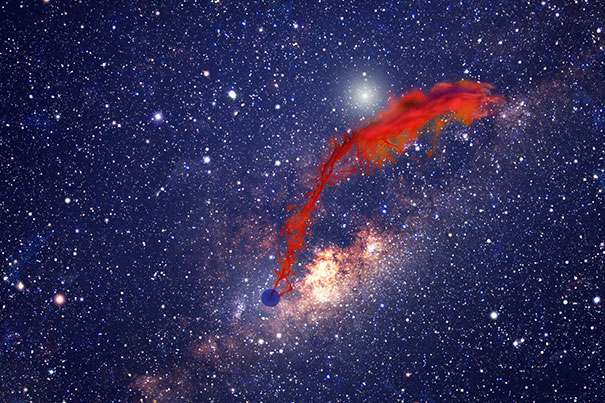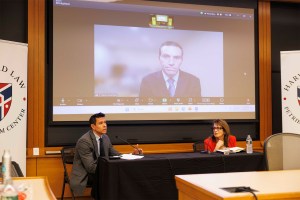Science & Tech
-

Harsh past might bare its teeth
Early adversity leads to higher aggression and fearfulness in adult canines, study says

-
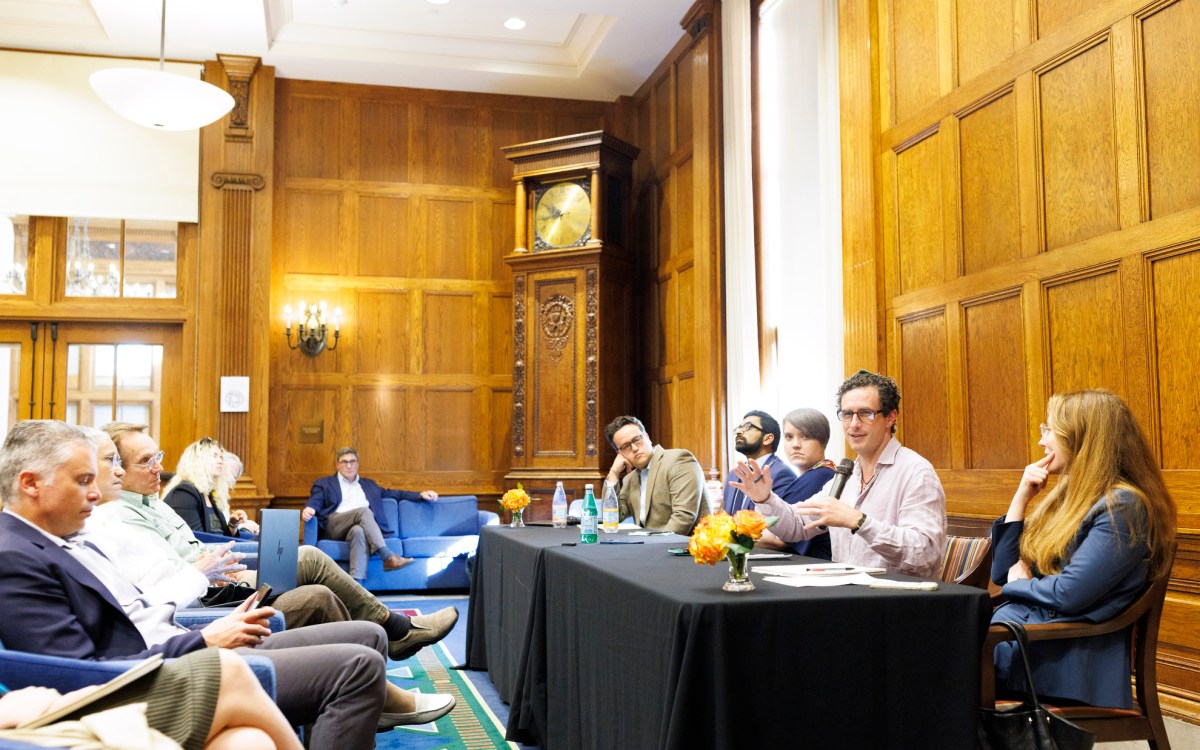
What will AI mean for humanity?
Scholars from range of disciplines see red flags, possibilities ahead
-
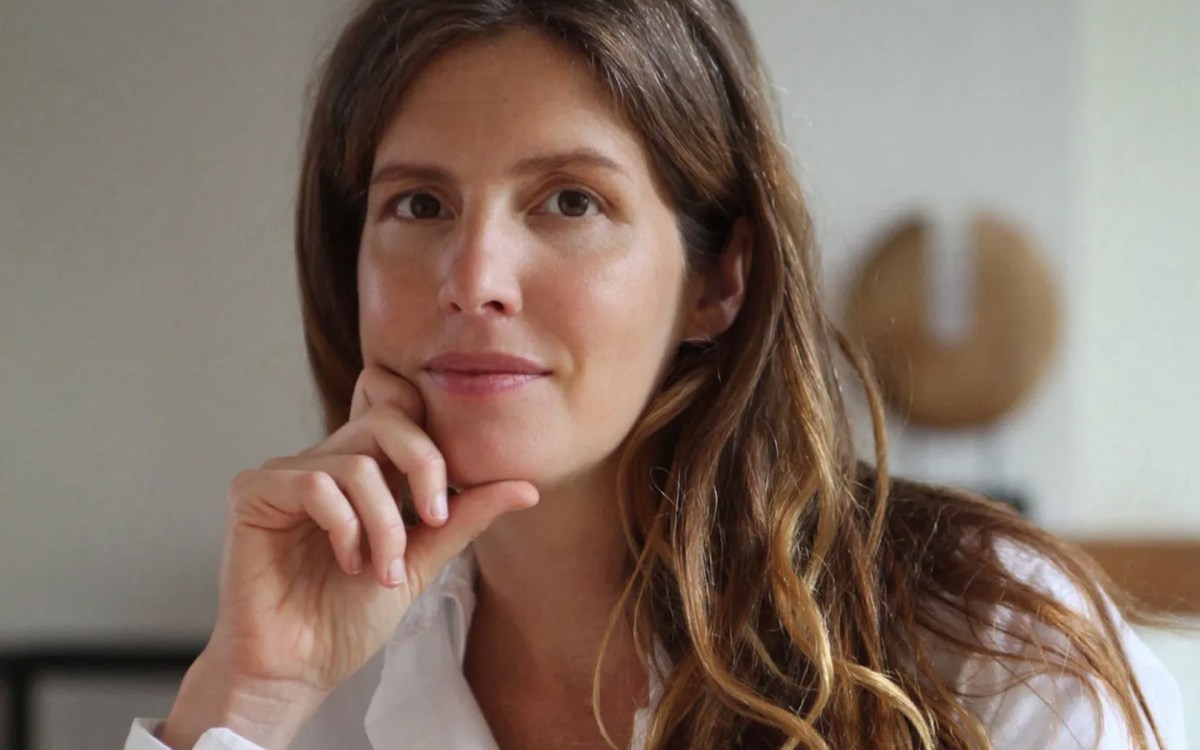
‘Human exceptionalism is at the root of the ecological crisis’
Saving the planet requires getting over ourselves, argues author of ‘The Arrogant Ape’
-
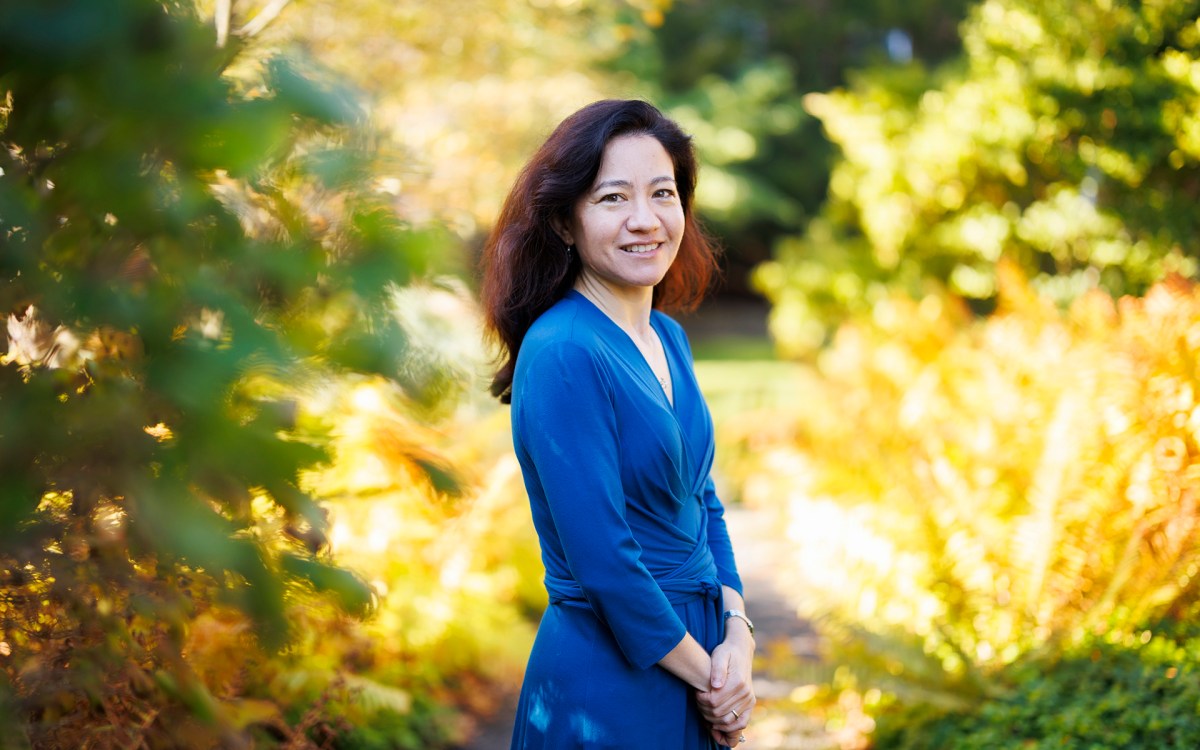
Lauren Williams awarded MacArthur ‘genius grant’
Math professor honored for theoretical breakthroughs with sometimes surprising applications across phenomena such as tsunamis, traffic
-
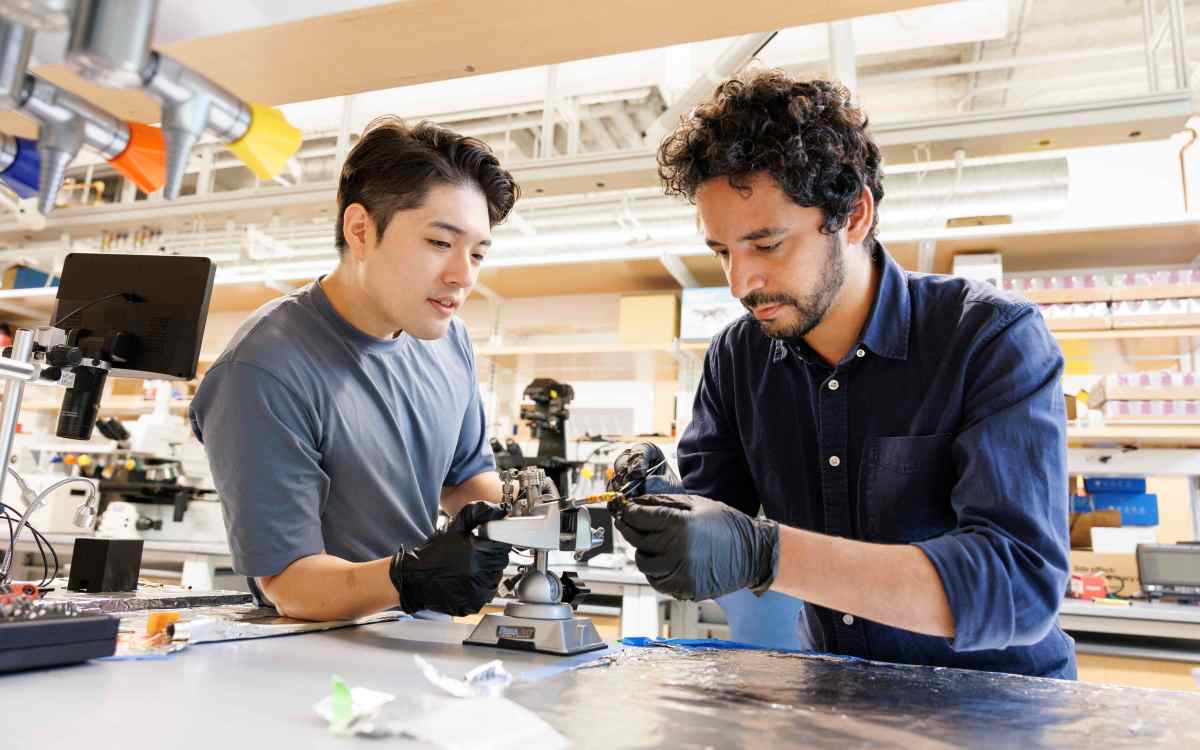
-
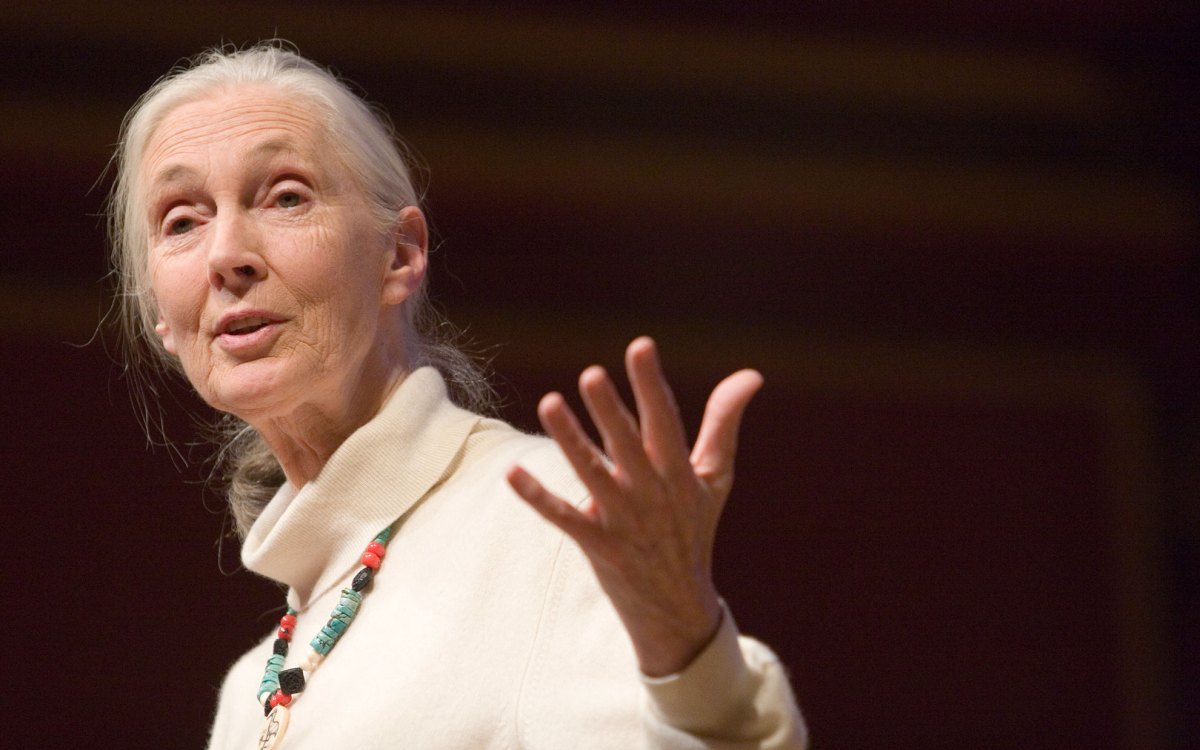
‘She had a sense of caring for everybody that she encountered.’
Richard Wrangham remembers his teacher and colleague Jane Goodall as a force of science, empathy, and hope
-
Ways of seeing
Harvard scientist Margaret Livingstone uses works of art to explore the workings of the brain.
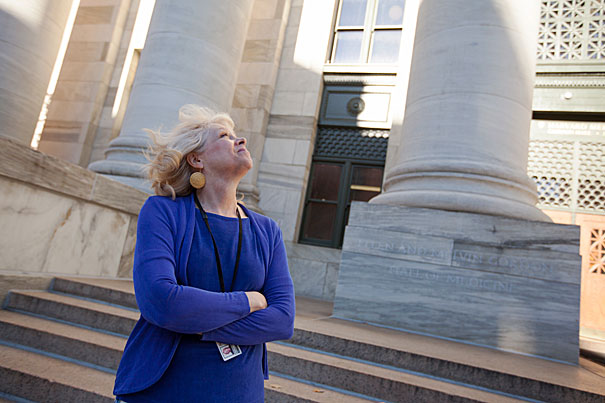
-
Tipping science on its head
Scientist and Princeton University President Shirley Tilghman argued for a new approach to teaching science to college students, introducing it earlier in the learning process.

-
When the sky turned black
Director Ken Burns presented clips of his new documentary on the Dust Bowl at Harvard’s Boylston Hall, talking about the creative process that he uses in his films.
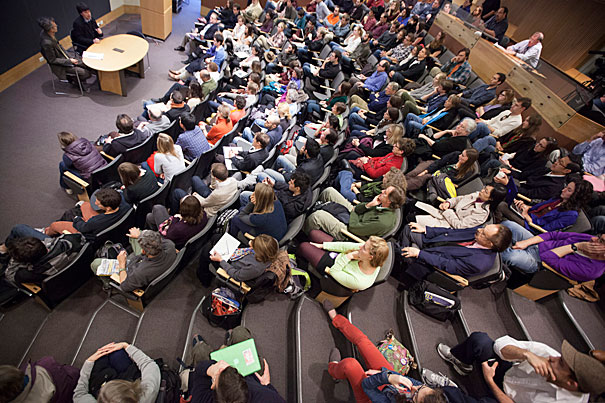
-
Taking Charge with cellphones
Harvard architecture student Jeffrey Mansfield launches a project designed to combine solar power and smartphones to protect the Amazon basin, link forest entrepreneurs, and give Amazonian people a voice in the world.
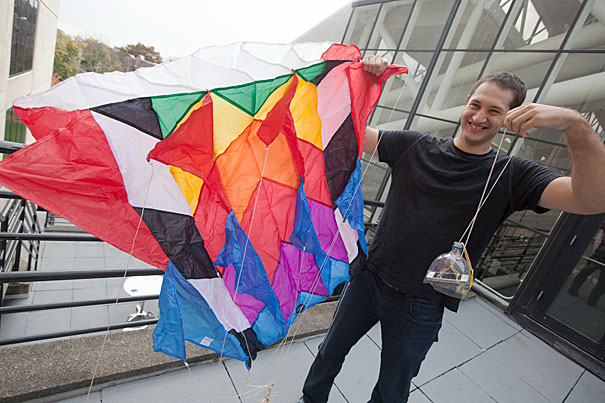
-
Catch and release
Researchers designed a chip that uses a 3-D DNA network made up of long DNA strands with repetitive sequences that — like the jellyfish tentacles — can detect, bind, and capture certain molecules.
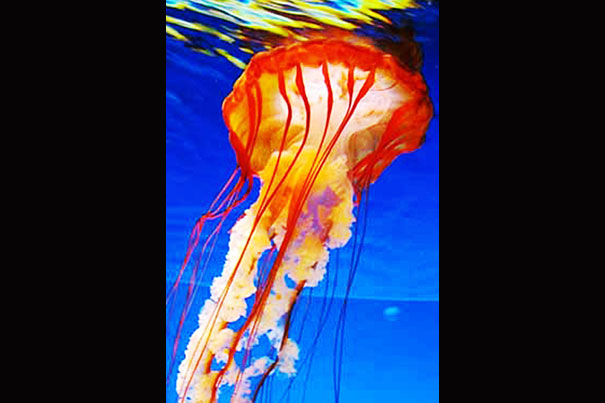
-
Intelligent Earth
Once its axis tilts, how does the Earth “know” to return to its normal orientation? Work by Harvard researchers provides some answers.
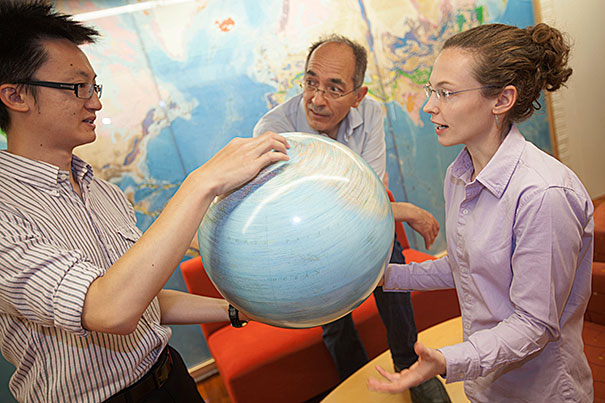
-
Hello again, climate change
Superstorm Sandy’s hurricane winds and torrential downpours killed at least 106 people, left millions without power, and caused billions of dollars in damage. It also got people talking again about climate change.

-
How Google sees the race
Seth Stephens-Davidowitz, a Ph.D. student in economics, uses Google Insights for Search, an online tool for extracting data from the millions of daily Google searches, and then uses statistical tools to analyze the data to gain insights on who is likely to vote and on voter turnout on Election Day.
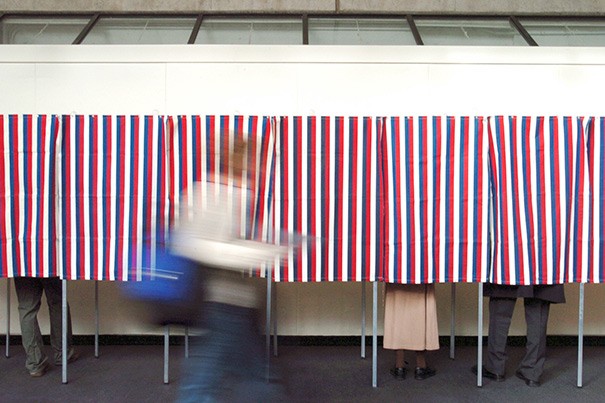
-
Crossing the river of myths
Grasp the right facts, said a renowned medical statistician, and the world is more complicated and interesting, with fewer myths that divide one region from another.

-
Unearthing a dietary behavior
A new Harvard study says that pica — and particularly geophagy, or the eating of soil or clay — is far more prevalent in Madagascar, one of the few areas of the world where it had gone unreported, than researchers previously thought. The research also suggests that the behavior may be more prevalent worldwide, particularly among men, than earlier believed.

-
Good day, moons
CfA fellow David Kipping is heading a hunt for astronomical bodies at the edge of our ability to detect them: moons circling planets in other solar systems.
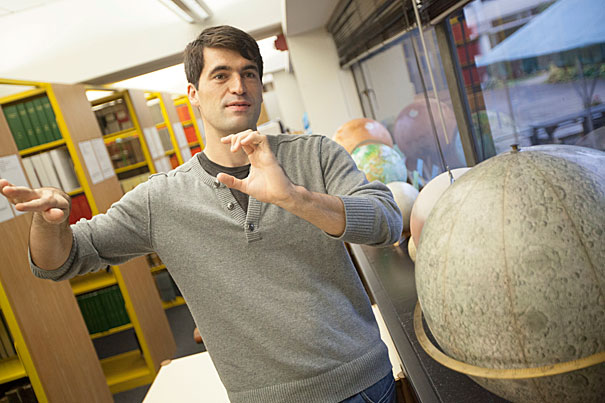
-
Cautious geohacking
By tailoring geoengineering efforts by region and by need, a new model promises to maximize the effectiveness of solar radiation management while mitigating its potential side effects and risks.
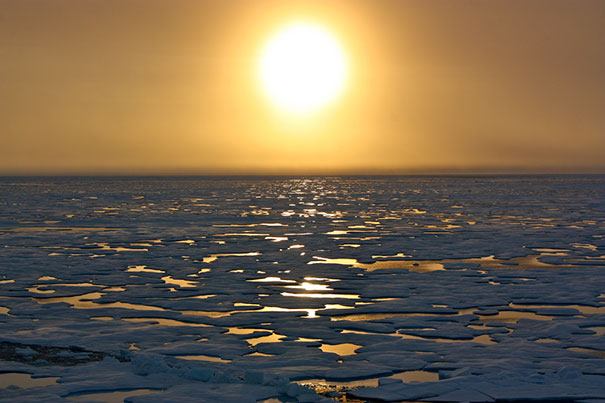
-
President Faust sustainability message
Harvard University President Drew Faust speaking on the University’s commitment to sustainability and the release of its first Sustainability Impact Report (http://www.green.harvard.edu/report).
-
Making a sustained impact
Harvard has released a sustainability impact report that provides a University-wide snapshot of the progress that has been made by students, staff, and faculty to reduce the environmental footprint and increase the operational efficiency of Harvard’s campus.
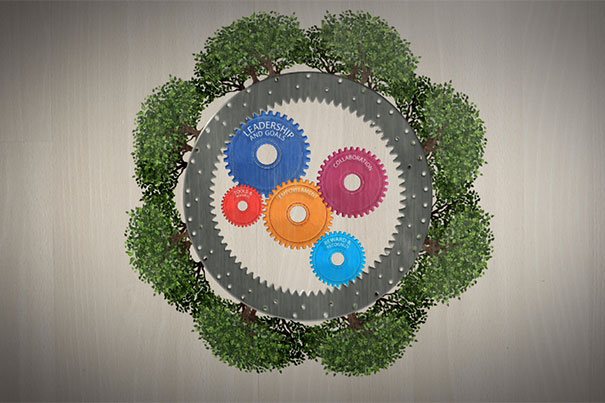
-
When it’s best to do nothing at all
A new study by Harvard University researchers, soon to be published in the journal Ecology, yields a surprising result for large woodlands: When it comes to the health of forests, native plants, and wildlife, the best management decision may be to do nothing.
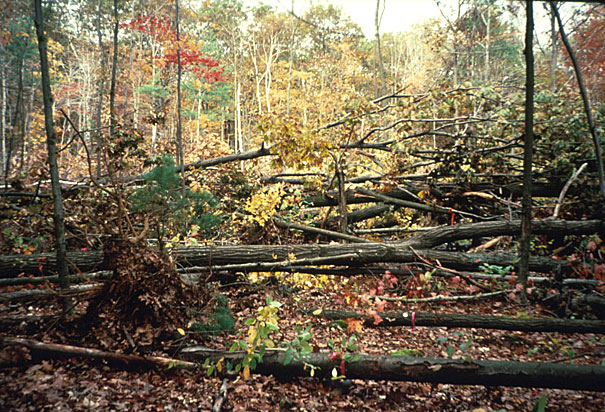
-
Chinese cities, by design
A new three-year, three-city course at the Harvard Graduate School of Design gives students an immersive learning experience in some of China’s fast-growing frontier cities.
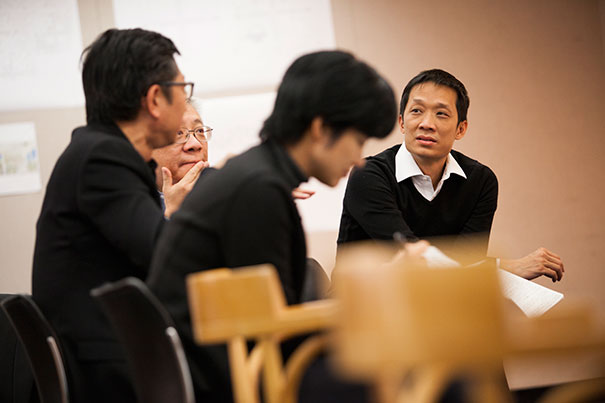
-
Seeking to connect on water issues
The U.S. lacks a national water policy, resulting in pushing and pulling by a wide array of competing interests in managing the nation’s water supply, said experts at a Radcliffe symposium.
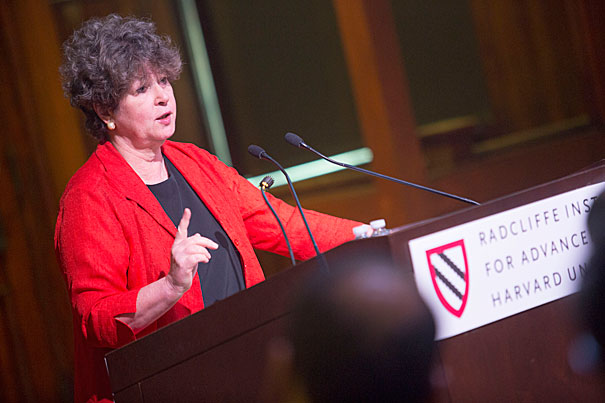
-
Applied physics as art
Harvard researchers spray-paint ultrathin coatings that change color with only a few atoms’ difference in thickness.
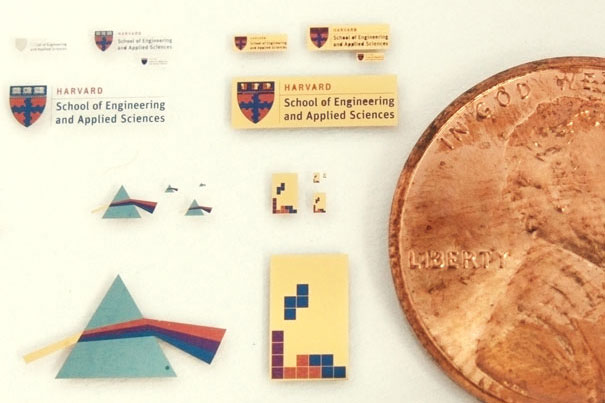
-
A monumental task
Harvard’s Corpus of Maya Hieroglyphic Inscriptions Program is making a digital scan of Harvard Yard’s Chinese stele as part of a conservation effort aimed at preserving the ornate gift from Harvard’s Chinese alumni on Harvard’s 300th birthday.
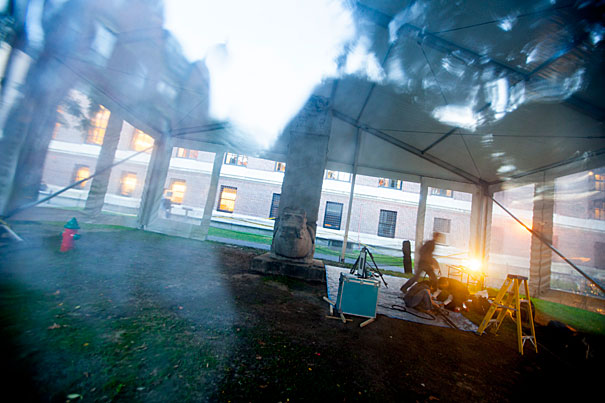
-
A close eye on population growth
Joel Cohen, head of the Laboratory of Populations at Rockefeller and Columbia universities, looked at the latest projections for world population growth, and factors that could alter them, in a Harvard talk.
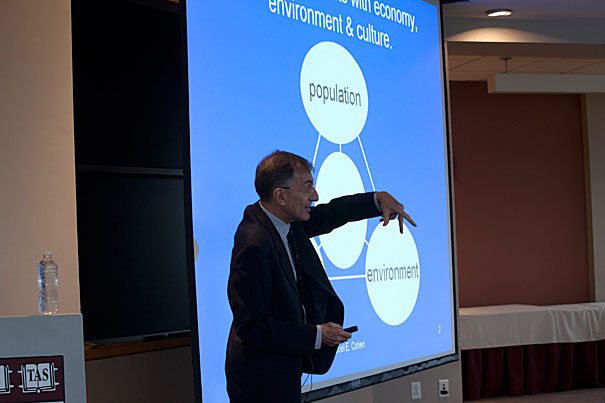
-
‘Point of no return’ found
Using a continent-spanning telescope, an international team of astronomers has peered to the edge of a black hole at the center of a distant galaxy. For the first time, they have measured the black hole’s “point of no return” — the closest distance that matter can approach before being irretrievably pulled into the black hole.
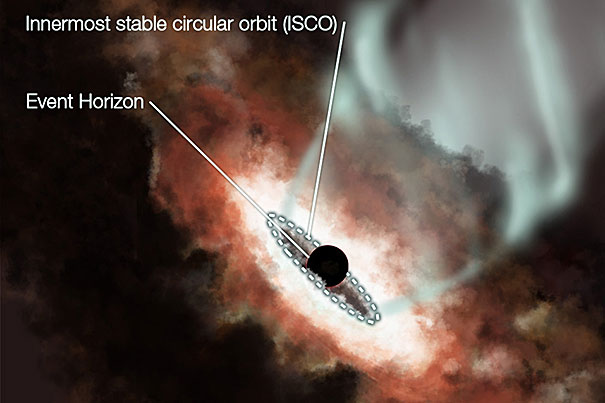
-
An engineering landmark
The Harvard School of Engineering and Applied Sciences celebrates a landmark degree accreditation, and a broadening, flexible future of programs that break down academic barriers.
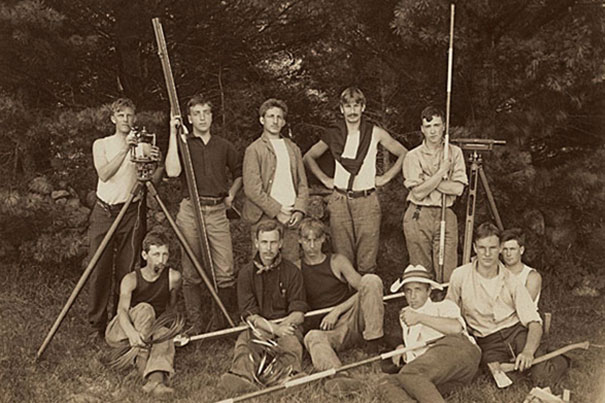
-
‘Silent Spring,’ 50 years on
Environmentalists and faculty members gathered at Sanders Theatre to mark the 50th anniversary of the publication of Rachel Carson’s “Silent Spring,” which catalyzed the environmental movement in its impassioned presentation of the impact of chemicals on nature.
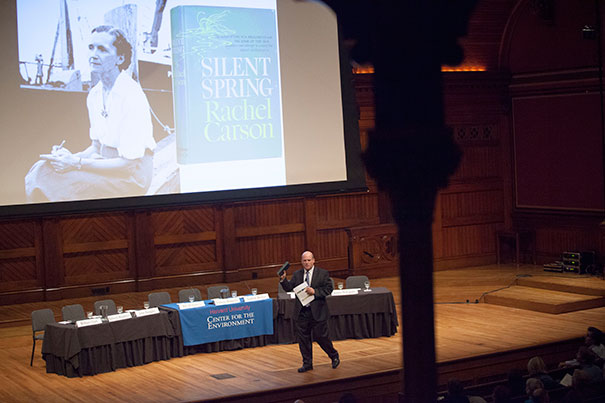
-
An invasion of New England
While new species naturally expand to other places and sometimes disrupt the scene when they arrive, the pace of introduction of invasive species has picked up enormously over the past century and a half, stressing and transforming New England forests.
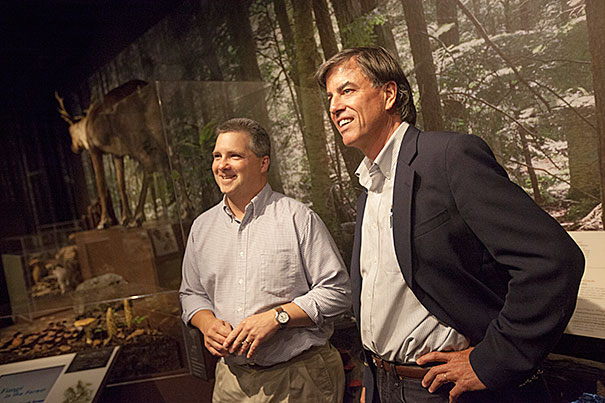
-
Managing just fine
Measurements of stress hormones and self-reports of anxiety show that leaders in stable organizations experience less stress than their subordinates, likely because they have greater control over their office lives.
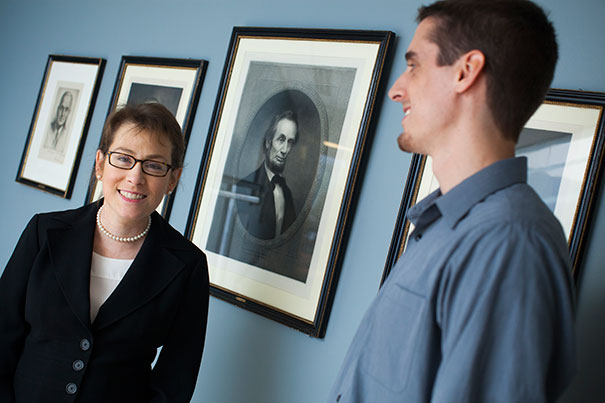
-
Spoiled opportunity
Republican objections to a climate change “tax” have stained the cap-and-trade approach to tackling climate change, making it politically unpalatable, even though it proved effective at fighting acid rain over the past two decades.
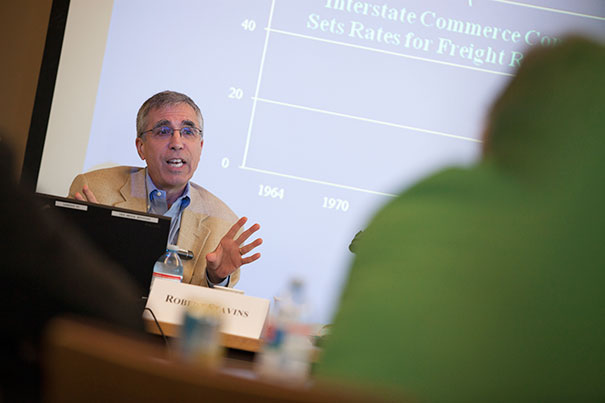
-
Emergency planning
Six of Harvard’s deep thinkers on climate change and sustainability took the stage Sept. 18 in the second annual Harvard Thinks Green.
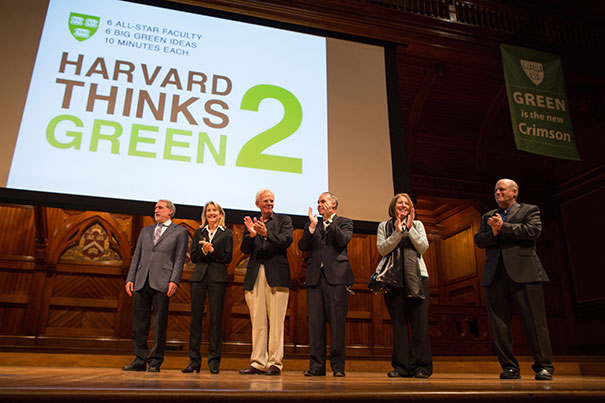
-
Alan Turing at 100
Harvard’s Collection of Historical Scientific Instruments celebrates the 100th birthday of Alan Turing, whose ideas theorized the first computers, spurred the science of artificial intelligence, and — oh yes — helped save the Allies during World War II.
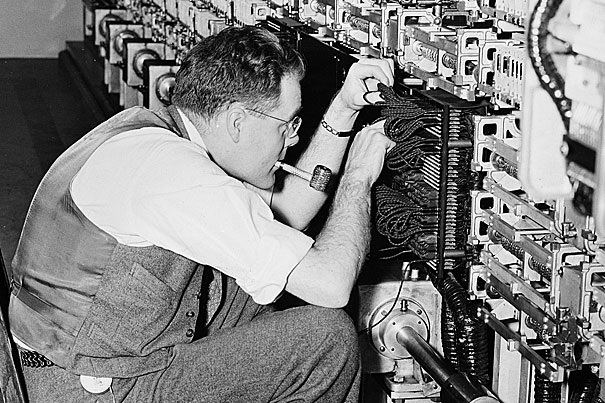
-
Figuring out fairness
A new Harvard study suggests that children as young as 3 consider merit — a key part of more-advanced ideas of fairness — when distributing resources.
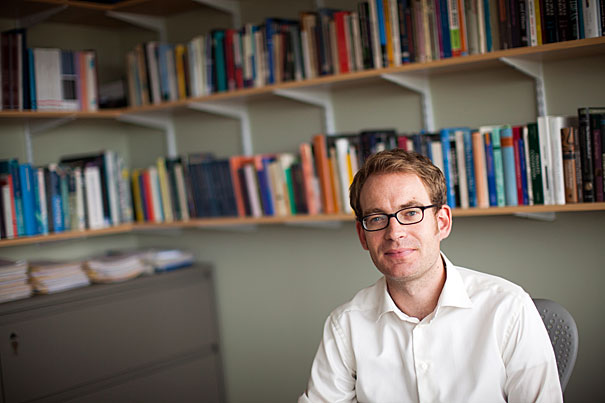
-
Planets form in cosmic maelstrom
At first glance, the center of the Milky Way seems like a very inhospitable place to try to form a planet. New research by astronomers at the Harvard-Smithsonian Center for Astrophysics shows that planets still can form in this cosmic maelstrom.
